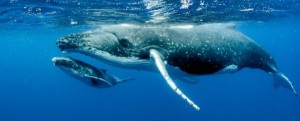Many of the plastics in daily life are used only once and thrown away and so much of it is ending up in the ocean that in just a few years, predictions forecast there will be a pound of plastic for every three pounds of fish in the sea.
 From the tiniest plankton to the largest whales, plastics impact nearly 700 species in our ocean. Videos of these impacts can be seen first hand, like a sea turtle with a plastic straw embedded in its nose or a whale entangled in a fishing net, approaching divers that release it from harm.
From the tiniest plankton to the largest whales, plastics impact nearly 700 species in our ocean. Videos of these impacts can be seen first hand, like a sea turtle with a plastic straw embedded in its nose or a whale entangled in a fishing net, approaching divers that release it from harm.
Some of these incidents have happy endings, but in reality, many more do not.
Plastic has been found in more than 60% of all seabirds and in 100% of sea turtles species, that mistake plastic for food. And when animals ingest plastic, it can cause life-threatening problems, including reduced fitness, nutrient uptake and feeding efficiency—all vital for survival.

Every year, 8 million metric tons of plastics enter our ocean on top of the estimated 150 million metric tons that currently circulate our marine environments. Whether by errant plastic bags or plastic straws winding their way into gutters or large amounts of mismanaged plastic waste streaming from rapidly growing economies, that’s like dumping one New York City garbage truck full of plastic into the ocean every minute of every day for an entire year! And that much plastic is bound to have an impact on ocean ecosystems.
Plastic in the ocean is a people problem, which means people like you can help solve it. For more than 30 years, Ocean Conservancy has brought together more than 12 million volunteers from 153 countries to participate in our annual International Coastal Cleanup. In that time, volunteers have picked up more than 220 million pounds of trash from the world’s beaches. We’re so proud of the work this global family of volunteers has achieved together, but with plastic production increasing around the world, it’s clear that the ultimate solution is to keep plastic out of the ocean in the first place.
Our goal is to cut down the amount of plastic entering the ocean by half within a decade. We believe that the long term solution to plastic in our ocean is to transform the role that plastic plays in the worldwide economy. But with 8 million metric tons dumped in the ocean every year, the ocean can’t wait for long term solutions, and we need to act now. Plastic production is expected to double over the next ten years, and we need to make sure the accompanying wave of plastic waste never reaches our ocean.
Ocean Conservancy
